Ensuring Environmental Compliance & Operational Excellence: A Guide to Documented Information & Operational Planning in ISO 14001

Effective environmental management requires well-documented information and structured operational controls. Clause 7.5 and Clause 8.1 of ISO 14001 provide guidelines to ensure proper documentation, control and implementation of environmental management practices. These clauses help organizations maintain transparency, control risks, and comply with environmental regulations while improving operational efficiency. This guide explores the key aspects of documented information and operational planning under ISO 14001.
Clause 7.5: Documented information
General
The organization’s environment management system shall include:
- Documented information required by this International Standard.
- Documented information determined by the organization as being necessary for the effectiveness of the environmental management system.
- The size of organization and its type of activities, processes, products and services.
- The need to demonstrate fulfilment of its compliance obligations.
- The complexity of processes and their interactions.
- The competence of persons doing work under the organization’s control.
Creating and updating
When creating and updating documented information, the organization shall ensure appropriate:
- Identification and description (e.g. title, date, author, or reference number).
- Format (e.g. language, software version, graphics) and media (e.g. paper, electronic).
- Review and approval for suitability and adequacy.
Control of documented information
Documented information required by the environmental management system and by this International Standard shall be controlled to ensure:
- It is available and suitable for use, where and when it is needed.
- It is adequately protected (e.g. from loss of confidentiality, improper use, or loss of integrity).
For the control of documented information, the organization shall address the following activities as applicable:
- Distribution, access, retrieval and use.
- Storage and preservation, including preservation of legibility.
- Control of changes (e.g. version control)
- Retention and disposition.
Documented information of external origin determined by the organization to be necessary for the planning and operation of the environmental management system shall be identified, as appropriate, and controlled.
Control of environmental management system documented information is important to ensure that:
- Information can be identified with the appropriate organization, division, function, activity, or contact person.
- Information maintained by the organization is regularly reviewed, revised as necessary and approved by authorized personnel prior to issue.
- The nature of identified non-conformity and any subsequent actions taken, and the results of any corrective action.
- Current versions of relevant documented information are available at all locations where operations essential to the effective functioning of the system are performed, including those necessary to ensure requirements are met.
- Information that is obsolete is promptly removed from all points of issue and from places and situations of use (eg. in some circumstances, for legal and / or knowledge preservation purposes, documented information that is obsolete can be retained as evidence of the results achieved).
Documented information can be effectively controlled by:
- Developing an appropriate format that includes unique titles, numbers, dates, revisions. revision history and authority.
- Assigning the review and approval of documented information maintained by the organization to individuals with sufficient technical capability and organizational authority.
- Maintaining an effective distribution system.
Clause 08: Operation
Clause 8.1: Operational planning and control
General guidance: Operational control
Types Of Certification
- ISO Certification
- ISO 9001 Certification
- ISO 14001 Certification
- ISO 45001 Certification
- ISO 22000 Certification
- ISO 27001 Certification
- ISO 17025 Certification
- ISO 13485 Certification
- ISO 20000-1 Certification
- ISO 22301 Certification
- ISO 50001 Certification
- ISO 37001 Certification
- IATF 16949 Certification
- ISO 29001 Certification
- ISO 31000 Certification
- ISO 20121 Certification
- ISO 10002 Certification
- ISO 41001 Certification
Get Free Consultation
Our Clients


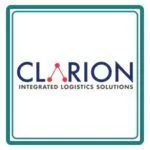


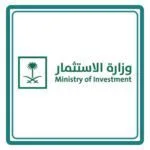
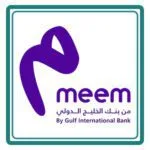

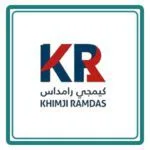



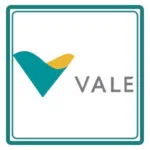


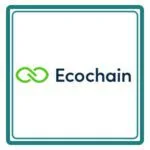
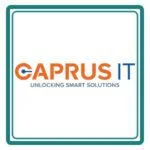

An organization should ensure that its operations and associated processes are conducted in a controlled way in order to fulfil the commitments of its environmental policy, achieve its environmental objectives and manage its significant environmental aspects, compliance obligations and its risks and opportunities that need to be addressed. To plan for effective and efficient operational controls, the organization should determine where such controls are needed and for what purpose. It should establish the types and levels of controls that meet the organization’s needs. The operational controls selected should be maintained and evaluated periodically for their continuing effectiveness.
The organization shall control planned changes and review the consequences of unintended changes, taking action to mitigate any adverse effects, as necessary.
The organization shall ensure that outsourced processes are controlled or influenced. The type and extent of control or influence to be applied to the process(es) shall be defined within the environmental management system.
Consistent with the life cycle perspective, the organization shall:
- Establish controls, as appropriate, to ensure that its environmental requirement(s) is (are) addressed in the design and development process for the product or service, considering each stage of its life cycle.
- Determine its environmental requirement(s) for the procurement of products and services. as appropriate.
- Communicate its relevant environmental requirement(s) to external providers, including contractors.
- Consider the need to provide information about potential significant environmental impacts associated with the transportation or delivery, use, end-of-life treatment and final disposal of its products and services.
The organization shall maintain documented information to the extent necessary to have confidence that the processes have been carried out as planned.
When determining necessary controls, or considering changes to existing controls, consideration should be given to risks and opportunities that need to be addressed, and to any unintended consequences that can result. The organization should control planned changes and review the consequences of unintended changes, taking action to mitigate any adverse effects, as necessary.
When considering controls for adverse environmental impacts, the organization can refer to the following hierarchy:
- Elimination, such as banning the use of PCBs, CFCs, etc.
- Substitution, such as change of solvent-based paint to water-based paint.
- Engineering controls, such as emission controls, abatement technology, etc.
- Administrative controls, such as procedures, visual controls, work instructions, Safety Data Sheets (SDS/MSDS/CSDS), etc.
To avoid deviations that can occur from the environmental policy, environmental objectives and compliance obligations, documented information can be developed, as appropriate, to explain, for example:
- A specific sequence of activities that should be carried out.
- Necessary qualifications of the personnel involved, including any workmanship required.
- Key variables that should be kept within certain limits, e.g. time, physical, biological.
- Characteristics of the materials to be used.
- Characteristics of the infrastructure to be used.
- Characteristics of the products resulting from the process.
Conclusion
A robust environmental management system relies on well-documented information and effective operational controls. By adhering to ISO 14001 Clause 7.5 and Clause 8.1, organizations can ensure compliance, improve efficiency and enhance environmental sustainability. Proper documentation and control mechanisms create a strong foundation for continuous improvement in environmental performance.
Call To Action
Boost your organization’s credibility with ISO 14001 certification! PopularCert provides expert guidance to help you achieve environmental compliance and business success. Get in touch with us today to get started!
GET A FREE CONSULTATION NOW
FAQ
Why is documented information important in ISO 14001?
Documented information provides clarity, consistency and accountability in environmental management. It ensures compliance, minimizes errors, and supports continuous improvement through proper tracking and control of environmental policies and processes.
How does operational planning help in environmental management?
Operational planning enables organizations to systematically identify, control and mitigate environmental risks. It ensures compliance, reduces negative environmental impacts, and improves overall efficiency in resource management and waste reduction.
How can companies effectively control documented information?
Organizations should implement version control, access restrictions and regular updates for their documented information. This ensures data integrity, compliance with regulations and efficient communication across all levels of the organization.
